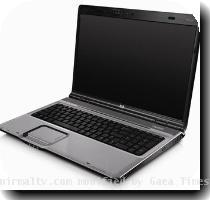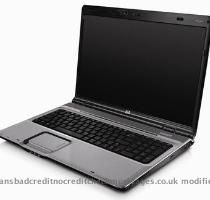One Laptop Per Child organization to shelve the actual laptops, aim for sub-$100 tablet
By Jessica Mintz, APThursday, May 27, 2010
One Laptop Per Child’s next move: the $100 tablet
SEATTLE — The nonprofit organization that has tried to produce a $100 laptop for children in the world’s poorest places is throwing in the towel on that idea __ and jumping on the tablet bandwagon.
One Laptop Per Child’s next computer will be based on chipmaker Marvell Technology Group Ltd.’s Moby tablet design. Marvell announced a prototype of the device this year and said it costs about $99.
Nicholas Negroponte, founder of One Laptop Per Child, is optimistic his organization will be able to keep the price under $100 in part because Marvell plans to market its tablets widely to schools and health care institutions.
“We want to see the price drop, and volume is the key to that,” Negroponte said.
The quirky green and white XO laptop sold by One Laptop Per Child (OLPC) to governments and organizations in countries such as Afghanistan and Uruguay wasn’t destined for such a broad audience. OLPC had to repeatedly scale back expectations for how many of the laptops it could produce, and it didn’t get the price much below $200, twice the price specified by the device’s “$100 laptop” nickname.
In 2005, Negroponte envisioned having built 100 million laptops in about two years. Today, 2 million of the machines are in use.
The XO was also more expensive to produce than a tablet would be because of its many moving parts and features meant to withstand glaring sun, blowing sand and spotty access to electricity. In some cases, OLPC had to change the XO’s design by region. For example, the physical keyboard had to be customized for students in countries that don’t use a Latin alphabet. It would be less expensive to change the software behind touch-screen keyboards.
Marvell’s co-founder, Weili Dai, said the company has also found ways to cut costs in the way it’s designing the chips.
The new tablets will have at least one, and maybe two, video cameras. They’ll sport Wi-Fi connections to the Internet, “multi-touch” screens and have enough power to play high-definition and 3-D video. Marvel hopes to make the screens 8.5 inches by 11 inches, the size of a standard sheet of paper. Unlike Apple Inc.’s iPad tablet, the device will also work with plug-in peripherals such as mice.
Negroponte said he eventually wants the tablets to run some version of the free Linux PC operating software. But the first generation of the “XO 3.0″ tablet will likely use Android, the mobile-device operating system from Google Inc., or something similar.
Although his group, which is based in Cambridge, Mass., worked with Microsoft Corp. to get its Windows operating system running on the XO laptops, Negroponte said the new tablets will not use Windows 7 because the software requires too much memory and computing power.
Negroponte said he plans to unveil the tablet device at the annual International Consumer Electronics Show in January.
The One Laptop Per Child project has its share of skeptics, who have questioned the possibility of manufacturing a laptop for $100 and the point of computers in countries that lack basic infrastructure.
Even so, OLPC’s work turned competitors on to the growing market for technology in developing countries. Companies including Intel Corp. came up with their own designs for inexpensive laptops for kids, while other organizations figured out ways to turn regular desktop computers into multiple workstations, drastically cutting costs for school computer labs and Internet cafes.
The scramble to produce inexpensive laptops for kids in developing countries also helped prime the pump for the recent flood of “netbooks,” which are smaller, cheaper and less powerful than laptops.
Negroponte said the last few months have been a turning point for his group.
“People are no longer asking ‘Does this work?’” Negroponte said. “The one question I hear all the time is, how do I pay for it? How do the economics work?”
Online:
www.laptop.org
Tags: Computer Hardware, Computing And Information Technology, Consumer Electronics, Hundred-dollar Tablet Computer, North America, Products And Services, Seattle, Software, United States, Washington


